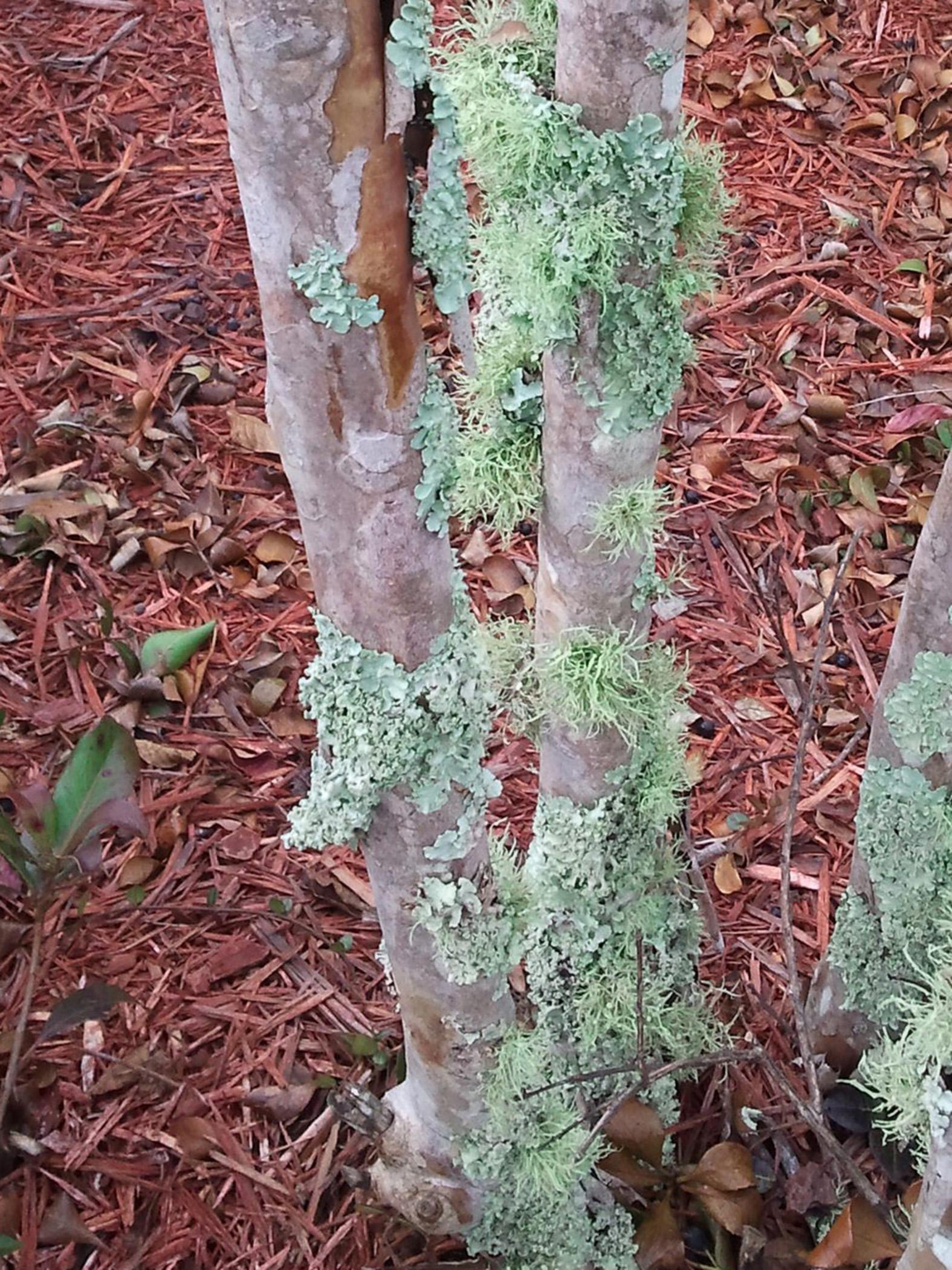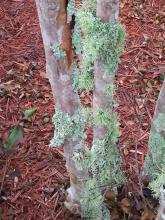Information Possibly Outdated
The information presented on this page was originally released on January 14, 2013. It may not be outdated, but please search our site for more current information. If you plan to quote or reference this information in a publication, please check with the Extension specialist or author before proceeding.
Bare branches bring attention to lichens
When funny, mold-looking things start growing on landscape trees and shrubs, phones start ringing in Mississippi State University Extension Service offices across the state.
Winter is a wonderful time of the year when many of our deciduous trees drop their leaves, signaling the end of one year with the promise of new growth in the spring. But it’s also the time when home gardeners start to notice other things growing in their gardens. The fact that they are green to gray in color adds a sense of dismay.
The cause for concern 99 times out of a 100 is an organism called the lichen. Lichens are very interesting organisms found throughout the world. They are an unlikely combination of fungi and algae that survive in a symbiotic relationship.
Many gardeners incorrectly assume lichens are feeding on the trees and shrubs in some sort of parasitic arrangement. Actually, the lichen is only growing on the surface of the bark. The algae supply food via photosynthesis, while the fungi gather water and other needed nutrients.
Three main types of lichen are found on the bark of woody plants and on rocks and other hard surfaces. Some are spreading and have a very flattened appearance. These are the crustose forms of lichen and, as the name suggests, they may look a little crusty.
Other lichens develop folds that resemble a crumpled sheet as they spread across a branch. These wavy folds are produced by folicose lichen. The third commonly found form of lichen is highly branched with multiple projections. These projections can have a very fine texture that resembles spongy little balls growing on a limb. These are the fruiticose forms of lichen.
Lichens are commonly observed on trees and shrubs that are struggling, and they get most of the blame for the plants’ problems. Most of the time, the lichens were already present before any decline started.
Trees that are stressed may lose a few branches, which allows more light into the canopy, and the lichens begin to grow better in the increased sunlight. As a tree continues to decline, lichens continue to grow, giving the illusion that they are causing the problem when they are just benefitting from the situation.
At this point, you may be wondering what is the best way to control lichen growth. The answer is simply to keep the landscape plants in their best health by following recommended watering, fertilization and other management practices. A well-growing plant will have a canopy that discourages lichen growth. You can lightly prune damaged branches to encourage new branch growth, which in turn helps to establish a denser canopy.
I personally think that lichen adds a touch of patina to our landscape plants, but I know that other gardeners have a different opinion. Knowing that they are not harming the plant may give gardeners a new perspective on this unusual thing growing in the landscape.








